A Deep Learning Method for 3D Object Classification and Retrieval Using the Global Point Signature Plus and Deep Wide Residual Network
Abstract
1. Introduction
- We introduce a novel descriptor GPSPlus for extracting both local and global information of the 3D object. We use a single view instead of multi-views in the existing view-based methods, because GPSP-DWRN provides more spatial information for the 3D model representation on a single view. The GPSP-DWRN could work with the low hardware computer resource, due to the minimum input size of the 2D projection image.
- A Deep Wide Residual Network learns the extracted color feature from the 3D object effectively, after applying GPSPlus. Our derivation of GPSP-DWRN is novel, to the best knowledge of the authors.
- Based on our experimental results on challenging datasets, the GPSP-DWRN is superior and more efficient than other well-known approaches.
2. Related Work
- Point Cloud Methods: A raw unranked point cloud represents the 3D data. These methods usually analyze the neighborhood from every point with a given radius, to extract features [14]. For example, PointNet++ [15] applies transformations that are order-invariant to every point, to generate a vector of features for the cloud. The local attributes generated are sampled, grouped, and used for scene classification and segmentation. Point-Voxel CNN (PVCNN) [16] combines the representation of sparse data with voxelized convolutions to improve data access performance. Point-Voxel Convolution (PVConv) accumulates neighbor points with convolutions based on voxel, converts points into voxel grids, and transforms them back. The authors included point-based transformations to obtain more detailed features. VoteNet [17], a Hough voting based-on method, uses PointNet++ layers as the backbone and chooses the points with the corresponding attributes as the seed to generate clusters of vote-based object instances. These clusters, with their categories, are finally transferred into 3D bounding boxes.
- Voxelization: The original point cloud discretizes into input data. Points are measured in the neighborhood distance for grouping into various clusters. Every voxel is expressed commonly as 0 for the presence or 1 for the absence in points in the space represented. The authors of ModelNet introduced 3D ShapeNets, used a cubic voxel to present the data, and generated the features by applying 3D convolutions. Similarly, VoxNet [18] was classified by applying a 3D CNN to the volumetric representation. References [19,20] reduced memory consumption and improved performance by combining octree descriptions and 3D convolution performance. Another approach, PointGrid [21], used a point-quantization technique to create grid cells with a constant number of points. This technique saves the coordinates of points for the representation improvement of local geometric objects.
- View-based methods: View-based methods are now popular in recent years, due to the independence of 3D reconstruction and possible application with multi-view representation [22]. Ansary et al. [23] selected representative views using X-means and then measured the similarity between pairwise 3D objects by applying Bayesian models. Shih et al. [24] introduced a feature descriptor that is shape-invariant under transformation for retrieval. Murase et al. [25] changed pose and illumination automatically for using multiple views to represent 3D models. Wang et al. [26] solved the retrieval problem by using the group sparse coding. The query object was constructed again by the view sets of each applicant shape, then the restoration error was considered to be the similarity measurement for retrieval. Reference [27] used representative views to construct the weighted bipartite graph to measure similarity. Liu et al. [28] suggested extracting an attribute view set based on a graph and matching approach for 3D retrieval. Another work, MVCNN, was proposed by Su et al., which first applied 2D ConvNets on 2D views of 3D objects for extracting visual features from separate 2D projections. The view pooling layer conducted a full stride channel-wise max pooling to obtain a unified feature vector. Lastly, the fully-connected layer predicted the class of one 3D object. Gao et al. [29] introduced a hyper-graph outline strategy for the retrieval task. Reference [30] proposed a matching method based on a clique-graph with the multi-model to learn the architectural features of the 3D model. Bai et al. [31] presented a search engine of 3D objects in real time, which depended on multiple-views using a twice-inverted file to improve the multi-view matching method, and learn the local distribution of 3D objects. Kanezaki et al. [32] introduced Rotationet, taking a 3D object’s multi-view images as inputs, and simultaneously estimated the class and the pose of this object.
3. Methodology
3.1. Gpsplus
3.2. Deep Wide Residual Network
4. Experiment
4.1. Datasets
4.2. Evaluation
4.3. Implementation Details
4.4. The Comparison on ModelNet Dataset
4.5. The Comparison on Shapenet Datasets
5. Conclusions
Author Contributions
Funding
Institutional Review Board Statement
Informed Consent Statement
Data Availability Statement
Acknowledgments
Conflicts of Interest
References
- Gomes, L.; Bellon, O.R.P.; Silva, L. 3D reconstruction methods for digital preservation of cultural heritage: A survey. Pattern Recognit. Lett. 2014, 50, 3–14. [Google Scholar] [CrossRef]
- Le, N.Q.K.; Do, D.T.; Hung, T.N.K.; Lam, L.H.T.; Huynh, T.-T.; Nguyen, N.T.K. A computational framework based on ensemble deep neural networks for essential genes identification. Int. J. Mol. Sci. 2020, 21, 9070. [Google Scholar] [CrossRef]
- Le, N.Q.K.; Huynh, T.-T. Identifying SNAREs by incorporating deep learning architecture and amino acid embedding representation. Front. Physiol. 2019, 10, 1501. [Google Scholar] [CrossRef] [PubMed]
- Yu, B.; Wang, Y.; Wang, L.; Shen, D.; Zhou, L. Medical image synthesis via deep learning. Adv. Exp. Med. Biol. 2020, 1213, 23–44. [Google Scholar] [CrossRef] [PubMed]
- Hu, W.; Zhang, Y.; Li, L. Study of the application of deep convolutional neural networks (CNNs) in processing sensor data and biomedical images. Sensors 2019, 19, 3584. [Google Scholar] [CrossRef] [PubMed]
- Chen, S.-Y.; Lin, C.; Li, G.-J.; Hsu, Y.-C.; Liu, K.-H. Hybrid deep learning models with sparse enhancement technique for detection of newly grown tree leaves. Sensors 2021, 21, 2077. [Google Scholar] [CrossRef] [PubMed]
- Su, H.; Maji, S.; Kalogerakis, E.; Learned-Miller, E. Multi-view convolutional neural networks for 3D shape recognition. In Proceedings of the IEEE International Conference on Computer Vision, Santiago, Chile, 7–13 December 2015; pp. 945–953. [Google Scholar] [CrossRef]
- Wu, Z.; Song, S.; Khosla, A.; Yu, F.; Zhang, L.; Tang, X.; Xiao, J.; Fisher, Y. 3D ShapeNets: A deep representation for volumetric shapes. In Proceedings of the 2015 IEEE Conference on Computer Vision and Pattern Recognition (CVPR), Boston, MA, USA, 7–12 June 2015; pp. 1912–1920. [Google Scholar] [CrossRef]
- Qi, C.R.; Su, H.; Mo, K.; Guibas, L.J. Pointnet: Deep learning on point sets for 3D classification and segmentation. In Proceedings of the IEEE Conference on Computer Vision and Pattern Recognition, Honolulu, HI, USA, 21–26 July 2017; pp. 652–660. [Google Scholar] [CrossRef]
- Zeng, H.; Wang, Q.; Li, C.; Song, W. Learning-based multiple pooling fusion in multi-view convolution neural network for 3D model classification and retrieval. J. Inf. Process. Syst. 2019, 15, 1179–1191. [Google Scholar] [CrossRef]
- An, Q.; Shen, Y. Camera configuration design in cooperative active visual 3D reconstruction: A statistical approach. In Proceedings of the 2020 IEEE International Conference on Acoustics, Speech and Signal Processing (ICASSP), Barcelona, Spain, 4–8 May 2020; IEEE: Piscataway, NJ, USA, 2020; pp. 2473–2477. [Google Scholar] [CrossRef]
- Qin, G.; Zhou, Y.; Hu, K.; Han, D.; Ying, C. Automated reconstruction of parametric bim for bridge based on terrestrial laser scanning data. Adv. Civ. Eng. 2021, 2021. [Google Scholar] [CrossRef]
- Murtiyoso, A.; Grussenmeyer, P.; Suwardhi, D.; Awalludin, R. Multi-scale and multi-sensor 3D documentation of heritage complexes in urban areas. ISPRS Int. J. Geo Inf. 2018, 7, 483. [Google Scholar] [CrossRef]
- Domenech, J.F.; Escalona, F.; Gomez-Donoso, F.; Cazorla, M. A voxelized fractal descriptor for 3D object recognition. IEEE Access 2020, 8, 161958–161968. [Google Scholar] [CrossRef]
- Qi, C.R.; Yi, L.; Su, H.; Guibas, L.J. PointNet++: Deep hierarchical feature learning on point sets in a metric space. arXiv 2017, arXiv:1706.02413. [Google Scholar]
- Liu, Z.; Tang, H.; Lin, Y.; Han, S. Point-Voxel CNN for efficient 3D deep learning. In Proceedings of the Advances in Neural Information Processing Systems 32 (NIPS 2019), Vancouver, BC, Canada, 8–14 December 2019; pp. 965–975. [Google Scholar]
- Qi, C.R.; Litany, O.; He, K.; Guibas, L.J. Deep hough voting for 3d object detection in point clouds. arXiv 2019, arXiv:1904.09664. [Google Scholar]
- Maturana, D.; Scherer, S. VoxNet: A 3D convolutional neural network for real-time object recognition. In Proceedings of the 2015 IEEE/RSJ International Conference on Intelligent Robots and Systems (IROS), Hamburg, Germany, 28 September–2 October 2015; pp. 922–928. [Google Scholar] [CrossRef]
- Wang, P.S.; Liu, Y.; Guo, Y.X.; Sun, C.Y.; Tong, X. O-cnn: Octree-based convolutional neural networks for 3D shape analysis. Acm Trans. Graph. 2017, 36, 1–11. [Google Scholar] [CrossRef]
- Tatarchenko, M.; Dosovitskiy, A.; Brox, T. Octree generating networks: Efficient convolutional architectures for high-resolution 3D outputs. arXiv 2017, arXiv:1703.09438. [Google Scholar]
- Le, T.; Duan, Y. Pointgrid: A deep network for 3D shape understanding. In Proceedings of the IEEE Conference on Computer Vision and Pattern Recognition, Salt Lake City, UT, USA, 18–23 June 2018; pp. 9204–9214. [Google Scholar] [CrossRef]
- Zhou, H.; Liu, A.; Nie, W.; Nie, J. Multi-view saliency guided deep neural network for 3D object retrieval and classification. IEEE Trans. Multimed. 2020, 22, 1496–1506. [Google Scholar] [CrossRef]
- Ansary, T.F.; Daoudi, M.; Vandeborre, J. A Bayesian 3D search engine using adaptive views clustering. IEEE Trans. Multimed. 2007, 9, 78–88. [Google Scholar] [CrossRef]
- Shih, J.L.; Lee, C.H.; Wang, J. A new 3D model retrieval approach based on the elevation descriptor. Pattern Recognit. 2007, 40, 283–295. [Google Scholar] [CrossRef]
- Murase, H.; Nayar, S.K. Visual learning and recognition of 3D objects from appearance. Int. J. Comput. Vis. 1995, 14, 5–24. [Google Scholar] [CrossRef]
- Wang, X.; Nie, W. 3D model retrieval with weighted locality constrained group sparse coding. Neurocomputing 2015, 151, 620–625. [Google Scholar] [CrossRef]
- Gao, Y.; Dai, Q.; Wang, M.; Zhang, N. 3D model retrieval using weighted bipartite graph matching. Signal. Process. Image 2011, 26, 39–47. [Google Scholar] [CrossRef]
- Liu, A.; Wang, Z.; Nie, W.; Su, Y. Graph-based characteristic view set extraction and matching for 3D model retrieval. Inf. Sci. 2015, 320, 429–442. [Google Scholar] [CrossRef]
- Gao, Y.; Wang, M.; Tao, D.; Ji, R.; Dai, Q. 3D object retrieval and recognition with hypergraph analysis. IEEE Trans. Image Process. 2012, 21, 4290–4303. [Google Scholar] [CrossRef] [PubMed]
- Liu, A.; Nie, W.; Gao, Y.; Su, Y. Multi-modal clique-graph matching for view-based 3D model retrieval. IEEE Trans. Image Process. 2016, 25, 2103–2116. [Google Scholar] [CrossRef] [PubMed]
- Bai, S.; Bai, X.; Zhou, Z.; Zhang, Z.; Latecki, L.J. GIFT: A real-time and scalable 3d shape search engine. In Proceedings of the 2016 IEEE Conference on Computer Vision and Pattern Recognition (CVPR 2016), Las Vegas, NV, USA, 27–30 June 2016; pp. 5023–5032. [Google Scholar] [CrossRef]
- Kanezaki, A.; Matsushita, Y.; Nishida, Y. RotationNet: Joint object categorization and pose estimation using multiviews from unsupervised viewpoints. In Proceedings of the IEEE Conference on Computer Vision and Pattern Recognition, Salt Lake City, UT, USA, 18–22 June 2018; pp. 5010–5019. [Google Scholar] [CrossRef]
- Rustamov, R.M. Laplace–Beltrami eigenfunctions for deformation invariant shape representation. In Proceedings of the Fifth Eurographics Symposium on Geometry Processing, Barcelona, Spain, 4–6 July 2007. [Google Scholar]
- Naffouti, S.E.; Fougerolle, Y.; Sakly, A.; Meriaudeau, F. An advanced global point signature for 3D shape recognition and retrieval. Signal. Process. Image Commun. 2017, 58, 228–239. [Google Scholar] [CrossRef]
- Reuter, M.; Biasotti, S.; Giorgi, D.; Patanè, G.; Spagnuolo, M. Discrete Laplace–Beltrami operators for shape analysis and segmentation. Comput. Graph. 2009, 33, 381–390. [Google Scholar] [CrossRef]
- Zhang, H.; Van Kaick, O.; Dyer, R. Spectral mesh processing. Comput. Graph. Forum 2010, 29, 1865–1894. [Google Scholar] [CrossRef]
- Stankovic, L.; Mandic, D.; Dakovic, M.; Brajovic, M.; Scalzo, B.; Constantinides, T. Graph signal processing—Part I: Graphs, graph spectra, and spectral clustering. arXiv 2019, arXiv:1907.03467. [Google Scholar]
- He, K.; Zhang, X.; Ren, S.; Sun, J. Deep residual learning for image recognition. In Proceedings of the IEEE Conference on Computer Vision and Pattern Recognition, Las Vegas, NV, USA, 27–30 June 2016; pp. 770–778. [Google Scholar] [CrossRef]
- Zagoruyko, S.; Komodaki, N. Wide residual networks. arXiv 2016, arXiv:1605.07146. [Google Scholar]
- Ioffe, S.; Szegedy, C. Batch normalization: Accelerating deep network training by reducing internal covariate shift. arXiv 2015, arXiv:1502.03167. [Google Scholar]
- Hahnloser, R.; Sarpeshkar, R.; Mahowald, M.; Douglas, R.; Seung, H. Digital selection and analogue amplification coexist in a cortex-inspired silicon circuit. Nature 2000, 405, 947–951. [Google Scholar] [CrossRef]
- Srivastava, N.; Hinton, G.; Krizhevsky, A.; Sutskever, I.; Salakhutdinov, R. Dropout: A simple way to prevent neural networks from overfitting. J. Mach. Learn. Res. 2014, 15, 1929–1958. [Google Scholar]
- Krizhevsky, A.; Sutskever, I.; Hinton, G.E. Imagenet classification with deep convolutional neural networks. In Proceedings of the 25th International Conference on Neural Information Processing Systems, Lake Tahoe, NV, USA, 3–6 December 2012; pp. 1097–1105. [Google Scholar]
- Simonyan, K.; Zisserman, A. Very deep convolutional networks for large-scale image recognition. arXiv 2014, arXiv:1409.1556. [Google Scholar]
- Yang, J.; Yang, G. Modified convolutional neural network based on dropout and the stochastic gradient descent optimizer. Algorithms 2018, 11, 28. [Google Scholar] [CrossRef]
- Savva, M.; Yu, F.; Su, H.; Aono, M.; Chen, B.; Cohen-Or, D.; Deng, W.; Su, H.; Bai, S.; Bai, X. Shrec’16 track large-scale 3D shape retrieval from Shapenet Core55. In Proceedings of the Eurographics 2016 Workshop on 3D Object Retrieval, Lisbon, Portugal, 8 May 2016. [Google Scholar] [CrossRef]
- Kazhdan, M.; Funkhouser, T.; Rusinkiewicz, S. Rotation invariant spherical harmonic representation of 3D shape descriptors. In Proceedings of the Symposium on geometry processing, Aachen, Germany, 23–25 June 2003; pp. 156–164. [Google Scholar]
- Chen, D.; Tian, X.; Shen, M. On visual similarity based 3D model retrieval. Eurographics 2003, 22, 223–232. [Google Scholar] [CrossRef]
- Ren, M.; Niu, L.; Fang, Y. 3D-A-Nets: 3D deep dense descriptor for volumetric shapes with adversarial networks. arXiv 2017, arXiv:1711.10108. [Google Scholar]
- Song, Y.; Gao, L.; Li, X.; Pan, Q.K. An effective encoding method based on local information for 3D point cloud classification. IEEE Access 2019, 7, 39369–39377. [Google Scholar] [CrossRef]
- Zanuttigh, P.; Minto, L. Deep learning for 3D shape classification from multiple depth maps. In Proceedings of the 2017 IEEE International Conference on Image Processing (ICIP), Beijing, China, 17–20 September 2017; pp. 3615–3619. [Google Scholar] [CrossRef]
- Liu, A.A.; Guo, F.B.; Zhou, H.Y.; Li, W.H.; Song, D. Semantic and context information fusion network for view-based 3D model classification and retrieval. IEEE Access 2020, 8, 155939–155950. [Google Scholar] [CrossRef]
- Liu, A.A.; Hu, N.; Song, D.; Guo, F.B.; Zhou, H.Y.; Hao, T. Multi-View hierarchical fusion network for 3D object retrieval and classification. IEEE Access 2019, 7, 153021–153050. [Google Scholar] [CrossRef]
- Liang, Q.; Wang, Y.; Nie, W.; Li, Q. MVCLN: Multi-View convolutional LSTM network for cross-media 3D shape recognition. IEEE Access 2020, 8, 139792–139802. [Google Scholar] [CrossRef]

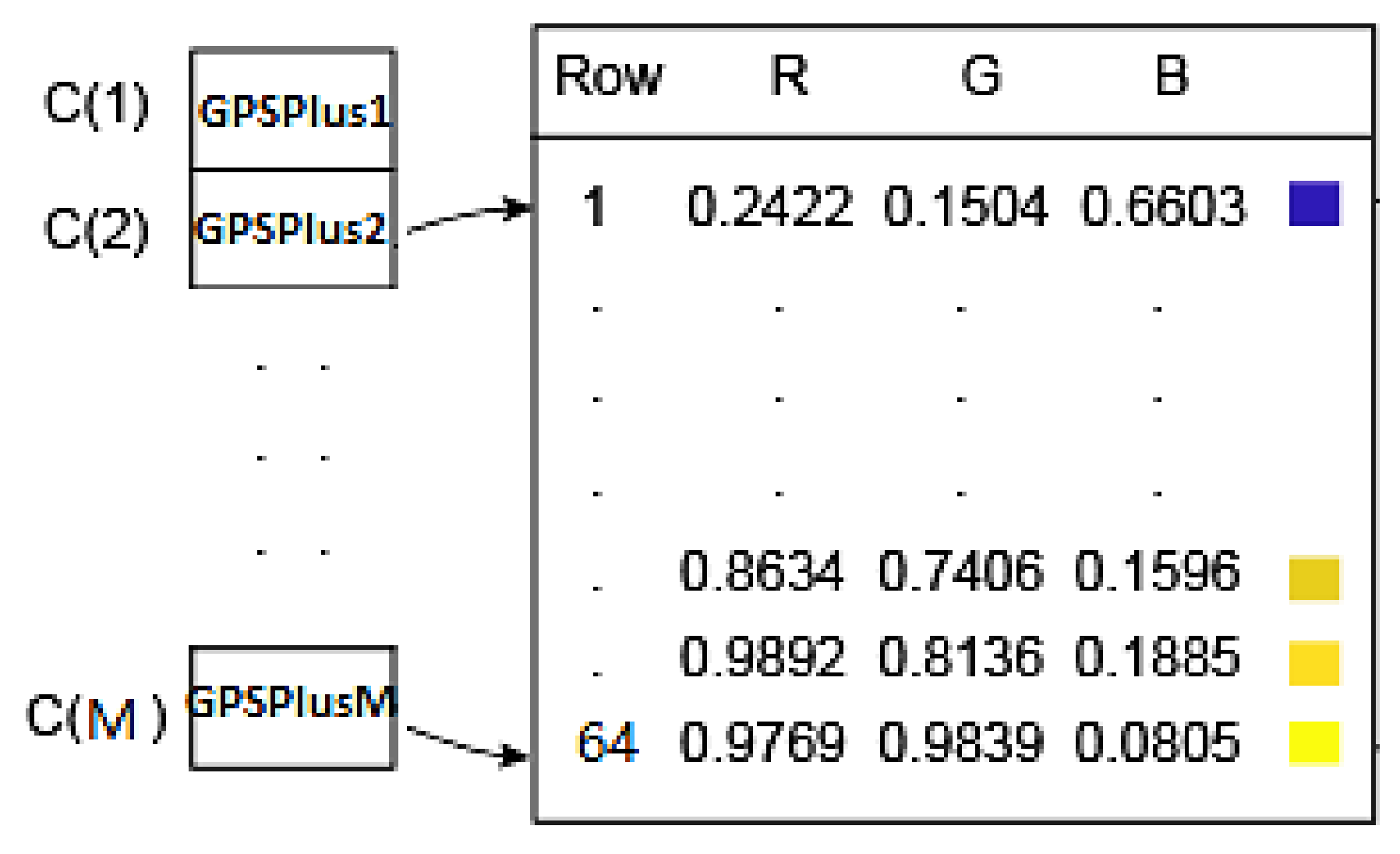
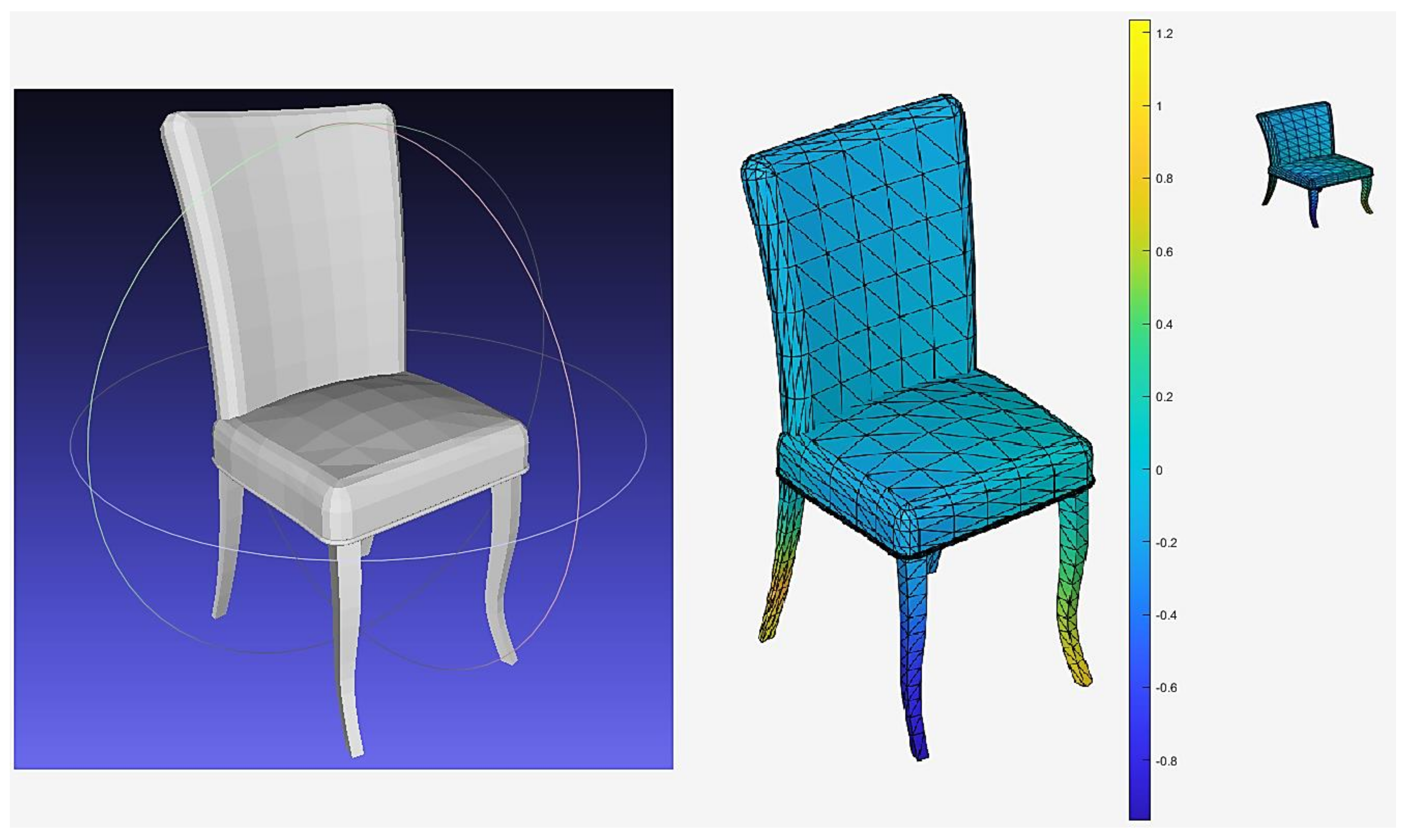
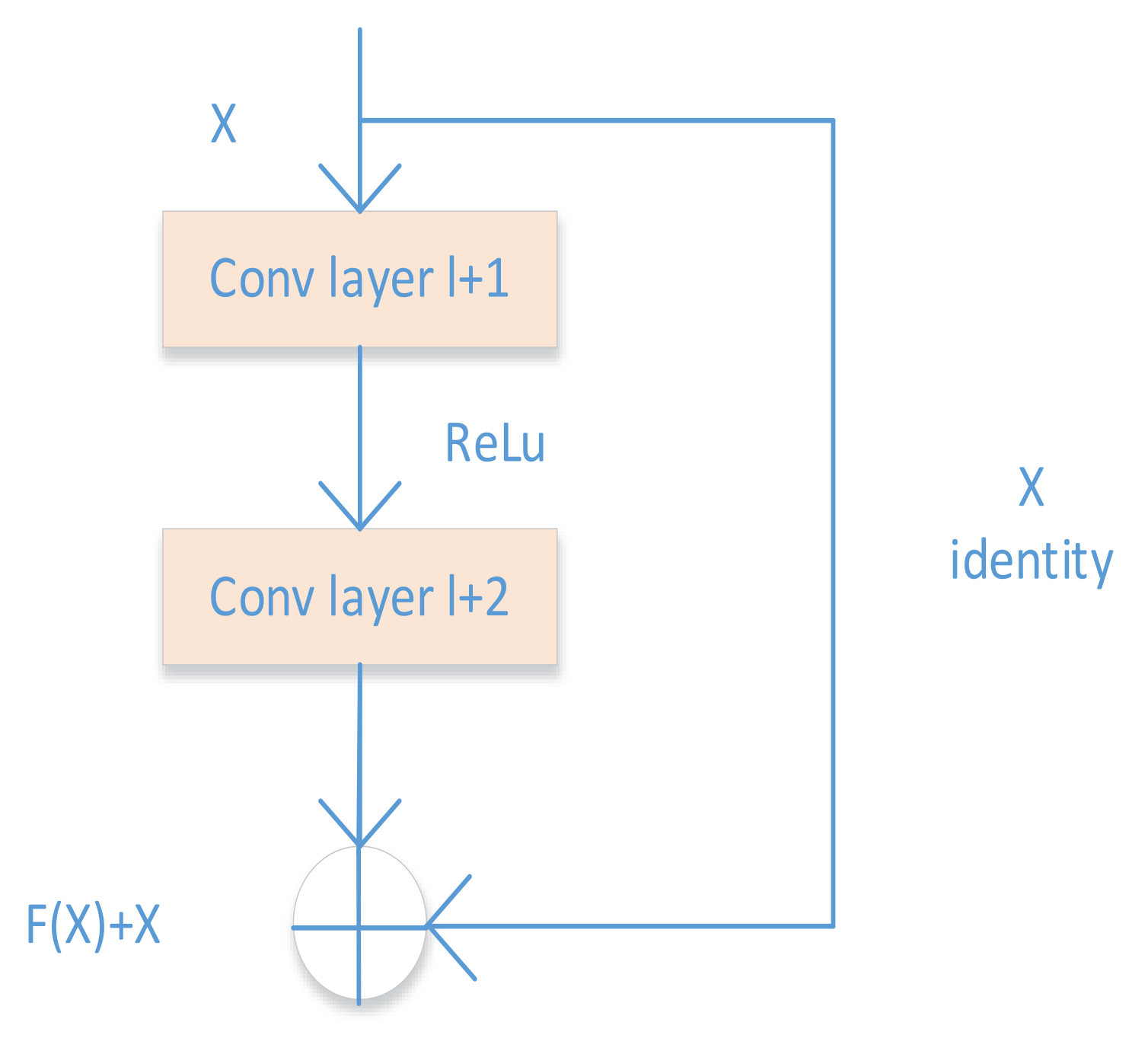
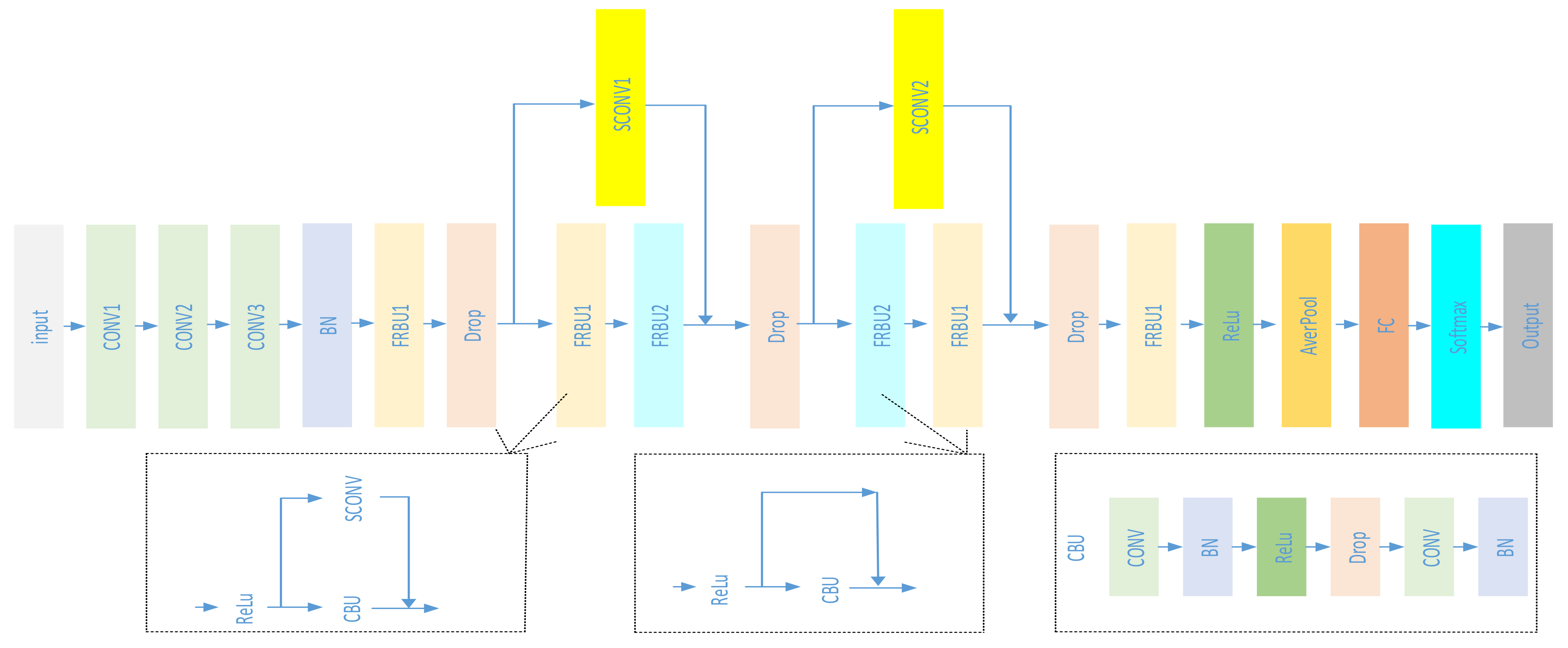


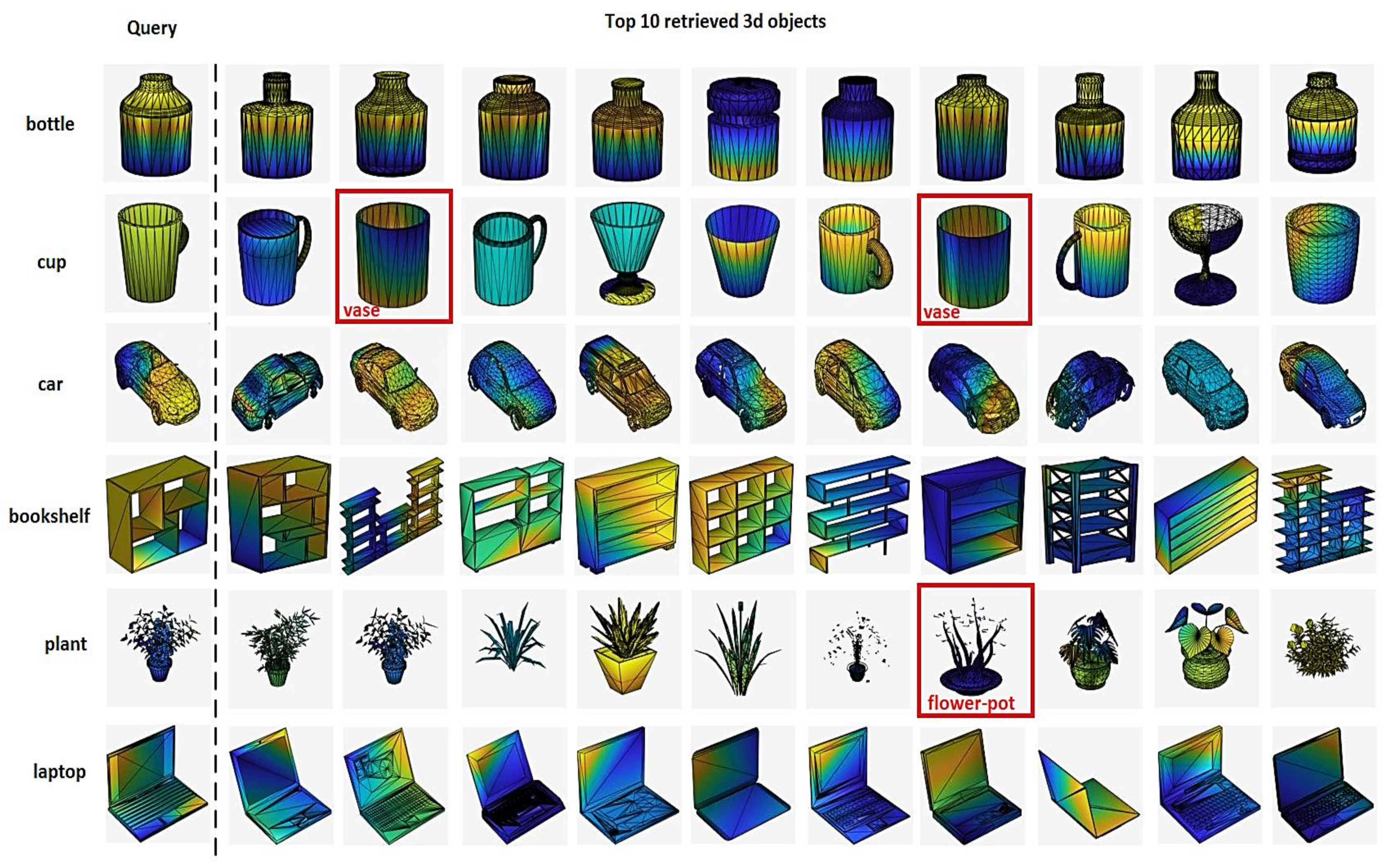
| Module | Unit | Number of Filters | Stride |
|---|---|---|---|
| CONV | CONV1 | 16 | 1 |
| CONV2 | 32 | 1 | |
| CONV3 | 64 | 1 | |
| FRBU1 | CBU of First FRBU1 | 32 | 1 |
| CBU of Second FRBU1 | 64 | 2 | |
| CBU of Third FRBU1 | 128 | 2 | |
| CBU of Fourth FRBU1 | 128 | 1 | |
| FRBU2 | CBU of First FRBU2 | 64 | 1 |
| CBU of Second FRBU2 | 64 | 1 | |
| SCONV | SCONV1 | 64 | 2 |
| SCONV2 | 128 | 2 | |
| SCONV of First FRBU1 | 32 | 1 | |
| SCONV of Second FRBU1 | 64 | 2 | |
| SCONV of Third FRBU1 | 128 | 2 | |
| SCONV of Fourth FRBU1 | 128 | 1 |
| Method | Data Format | ModelNet10 ACC mAP | ModelNet40 ACC mAP | ||
|---|---|---|---|---|---|
| SPH [47] | - | 79.8% | - | 68.2% | 33.3% |
| LFD [48] | - | 79.9% | - | 75.5% | 40.9% |
| 3D ShapeNets [8] | Voxelization | 91.0% | 68.2% | 75.5% | 40.9% |
| VoxNet [18] | Voxelization | 92.0% | - | 83% | - |
| 3D-A-Nets [49] | Voxelization | - | - | 90.5% | 80.1% |
| PointNet [9] | Point Cloud | - | - | 89.2% | - |
| Effective Point Cloud Encoding Method [41] | Point Cloud | - | - | 90.5% | - |
| Method [50] | |||||
| Multi Depth Maps [51] | 6 views | - | - | 87.8% | - |
| MVCNN, 12x [7] | 12 views | - | - | 89.9% | 70.1% |
| MVCNN, metric, 12x [7] | 12 views | - | - | 89.5% | 80.2% |
| MVCNN, 80x [7] | 80 views | - | - | 90.1% | 70.4% |
| MVCNN, metric, 80x [7] | 80 views | - | - | 90.1% | 79.5% |
| SCFN [52] | 8 views | 92.3% | 87.2% | 92.2% | 83.9% |
| MVHFN [53] | 8 views | - | - | 91.6% | 80.3% |
| MVCLN [54] | 6 views | 92.2% | - | 90.6% | - |
| GIFT [31] | 64 views | 91.5% | 91.1% | 89.5% | 81.9% |
| GPSP-DWRN | 1 view | 92.4% | 89.5% | 90.6% | 85.8% |
| Method | Views | FT | ST | NN | F_Measure | ANMRR | DCG | mAP |
|---|---|---|---|---|---|---|---|---|
| SCFN [43] | 2 | 0.769 | 0.915 | 0.851 | 0.303 | 0.206 | 0.798 | 0.816 |
| 4 | 0.809 | 0.934 | 0.888 | 0.314 | 0.167 | 0.838 | 0.83 | |
| 6 | 0.778 | 0.904 | 0.899 | 0.311 | 0.199 | 0.813 | 0.857 | |
| 8 | 0.832 | 0.937 | 0.911 | 0.327 | 0.148 | 0.855 | 0.872 | |
| GPSP-DWRN | 1 | 0.862 | 0.966 | 0.905 | 0.309 | 0.12 | 0.88 | 0.895 |
| Method | Views | FT | ST | NN | F_Measure | ANMRR | DCG | mAP |
|---|---|---|---|---|---|---|---|---|
| SCFN [43] | 2 | 0.635 | 0.738 | 0.854 | 0.302 | 0.322 | 0.692 | 0.775 |
| 4 | 0.689 | 0.783 | 0.887 | 0.314 | 0.272 | 0.743 | 0.797 | |
| 6 | 0.732 | 0.829 | 0.899 | 0.321 | 0.233 | 0.779 | 0.805 | |
| 8 | 0.814 | 0.862 | 0.903 | 0.332 | 0.167 | 0.829 | 0.839 | |
| MVHFN [44] | 2 | 0.393 | 0.555 | 0.651 | 0.229 | 0.515 | 0.457 | 0.452 |
| 4 | 0.452 | 0.627 | 0.739 | 0.231 | 0.374 | 0.516 | 0.495 | |
| 8 | 0.769 | 0.813 | 0.825 | 0.321 | 0.202 | 0.798 | 0.803 | |
| MVCNN [1] | 12 | 0.671 | 0.753 | 0.878 | 0.311 | 0.287 | 0.728 | 0.701 |
| GPSP-DWRN | 1 | 0.822 | 0.914 | 0.886 | 0.304 | 0.152 | 0.85 | 0.858 |
| Method | micro | macro | ||||||||
|---|---|---|---|---|---|---|---|---|---|---|
| P@N | R@N | F1@N | NDCG | mAP | P@N | R@N | F1@N | NDCG | mAP | |
| Kanezaki_RotationNet | 81.0% | 80.1% | 79.8% | 86.5% | 77.2% | 60.2% | 63.9% | 59.0% | 65.6% | 58.3% |
| Zhou_Improved_GIFT | 78.6% | 77.3% | 76.7% | 82.7% | 72.2% | 59.2% | 65.4% | 58.1% | 65.7% | 57.5% |
| Furuya_DLAN | 81.8% | 68.9% | 71.2% | 66.3% | 76.2% | 61.8% | 53.3% | 50.5% | 47.7% | 56.3% |
| Tatsuma_ReVGG | 76.5% | 80.3% | 77.2% | 74.9% | 82.8% | 51.8% | 60.1% | 51.9% | 49.6% | 55.9% |
| Thermos_MVFusionNet | 74.3% | 67.7% | 69.2% | 73.2% | 62.2% | 52.3% | 49.4% | 48.4% | 50.2% | 41.8% |
| Deng_CM-VGG5-6DB | 41.8% | 71.7% | 47.9% | 65.4% | 54.0% | 12.2% | 66.7% | 16.6% | 40.4% | 33.9% |
| DMk_DeepVoxNet | 79.3% | 21.1% | 25.3% | 19.2% | 27.7% | 59.8% | 28.3% | 25.8% | 23.2% | 33.7% |
| Li_ZFDR | 53.5% | 25.6% | 28.2% | 19.9% | 33.0% | 21.9% | 40.9% | 19.7% | 25.5% | 37.7% |
| SHREC16-Su_MVCNN | 77.0% | 77.0% | 76.4% | 81.5% | 73.5% | 57.1% | 62.5% | 57.5% | 64.0% | 56.6% |
| SHREC16-Bai_GIFT | 70.6% | 69.5% | 68.9% | 76.5% | 64.0% | 44.4% | 53.1% | 45.4% | 54.8% | 44.7% |
| SCFN | 52.6% | 82.9% | 59.2% | 88.2% | 80.1% | 20.1% | 76.4% | 21.3% | 79.3% | 62.5% |
| MVHFN | 75.3% | 75.4% | 74.7% | 88.0% | 81.5% | 54.0% | 57.4% | 52.9% | 84.7% | 74.2% |
| GPSP-DWRN | 82.6% | 69.1% | 71.2% | 89.3% | 83.0% | 56.7% | 36.8% | 40.5% | 86.9% | 77.6% |
Publisher’s Note: MDPI stays neutral with regard to jurisdictional claims in published maps and institutional affiliations. |
© 2021 by the authors. Licensee MDPI, Basel, Switzerland. This article is an open access article distributed under the terms and conditions of the Creative Commons Attribution (CC BY) license (https://creativecommons.org/licenses/by/4.0/).
Share and Cite
Hoang, L.; Lee, S.-H.; Kwon, K.-R. A Deep Learning Method for 3D Object Classification and Retrieval Using the Global Point Signature Plus and Deep Wide Residual Network. Sensors 2021, 21, 2644. https://doi.org/10.3390/s21082644
Hoang L, Lee S-H, Kwon K-R. A Deep Learning Method for 3D Object Classification and Retrieval Using the Global Point Signature Plus and Deep Wide Residual Network. Sensors. 2021; 21(8):2644. https://doi.org/10.3390/s21082644
Chicago/Turabian StyleHoang, Long, Suk-Hwan Lee, and Ki-Ryong Kwon. 2021. "A Deep Learning Method for 3D Object Classification and Retrieval Using the Global Point Signature Plus and Deep Wide Residual Network" Sensors 21, no. 8: 2644. https://doi.org/10.3390/s21082644
APA StyleHoang, L., Lee, S.-H., & Kwon, K.-R. (2021). A Deep Learning Method for 3D Object Classification and Retrieval Using the Global Point Signature Plus and Deep Wide Residual Network. Sensors, 21(8), 2644. https://doi.org/10.3390/s21082644






